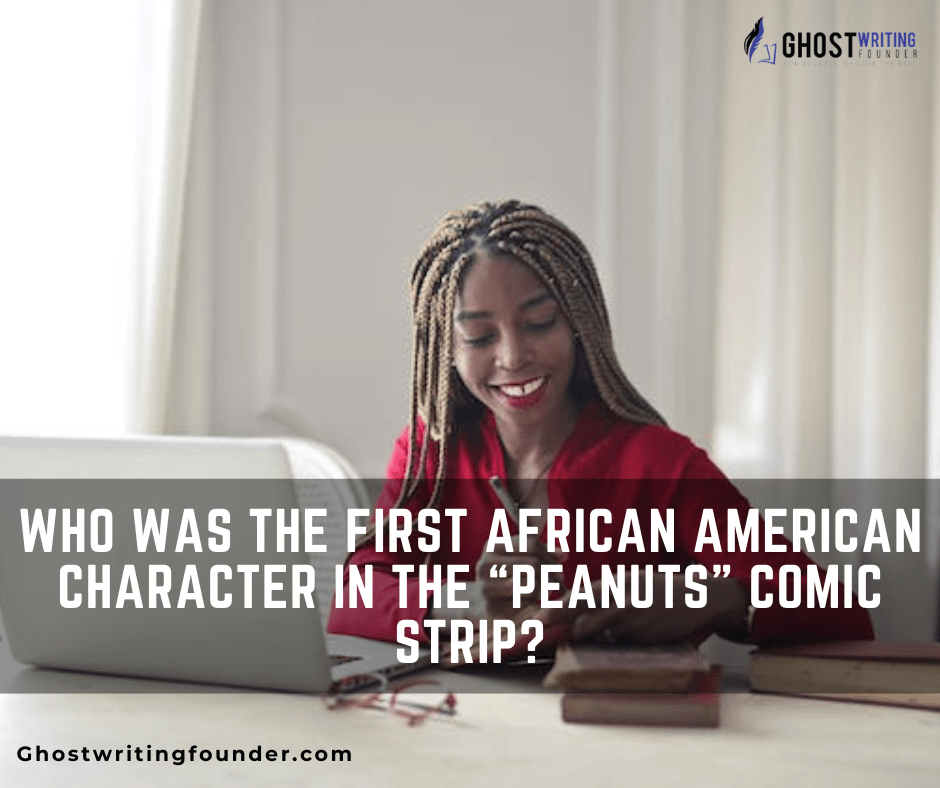
Writing
Introduction
In comics and animation, the “Peanuts” comic strip by Charles M. Schulz is a timeless classic beloved by people of all ages. While the main characters like Charlie Brown, Snoopy, and Lucy are well-known, the representation of diversity in the strip has evolved.
One significant milestone was the introduction of the first African American character. In this article, we’ll delve into the history of “Peanuts,” explore the groundbreaking introduction of this character, and reflect on the impact of this change.
Evolution of Diversity in “Peanuts”
Early Days and Lack of Diversity
When “Peanuts” first debuted in 1950, the comic strip landscape differed from today’s representation standards. The initial cast primarily consisted of white characters, with Charlie Brown and his friends navigating the ups and downs of childhood.
Franklin is not as well-known as Charlie Brown, Lucy, or Snoopy but is the first black figure in the “Peanuts” gang. And the story of how he came to be starts at a time when people were divided.
In the 1950s and 1960s, when human rights were being fought for, “Peanuts” was made. Activists sat in and rallied for equal rights, and Martin Luther King, Jr. was killed in 1968.
A few days after King died, a retired school teacher named Harriet Glickman wrote to “Peanuts” author Charles Schulz and asked him to add a black character to his comics.
Winds of Change
As societal norms evolved and conversations about diversity and inclusion gained momentum, cartoonists and creators began to recognize the importance of reflecting the real world in their works. Charles M. Schulz, the creator of “Peanuts,” was among those who embraced this change in comic book writing services.
Franklin’s Debut: A Landmark Moment
Franklin’s Debut: A Landmark Moment, similar to the groundbreaking narratives explored in Best Non-Fiction Adventure Books.
The Arrival of Franklin
In 1968, Charles M. Schulz boldly introduced Franklin, the first African American character in “Peanuts.” Franklin’s debut marked a significant step towards inclusivity and breaking racial barriers in comics.
Representation and Impact
Franklin’s presence in “Peanuts” was praised and criticized, much like the complex characters discussed in Distinguishing Fiction and Non-Fiction Writing. While some readers welcomed the inclusion of a diverse character, others raised concerns about the depth of his portrayal. Nevertheless, Franklin’s introduction was an important stride towards a more inclusive comic strip landscape.
Legacy and Continued Conversations
Shaping the Future
Franklin’s introduction paved the way for more diverse characters in “Peanuts” and other comic strips, a theme also explored in Exploring the World of Little Critter Books. It catalyzed discussions about representation and the power of media to shape perceptions and attitudes.
Onward and Upward
In subsequent years, “Peanuts” continued to explore themes of diversity, friendship, and life’s complexities. While Franklin’s role remained vital, other characters from various backgrounds joined the ensemble, enriching the narrative and reflecting the changing times.
The Lasting Influence of Franklin
Franklin’s inclusion in “Peanuts” had a ripple effect that extended far beyond the confines of the comic strip itself. His presence catalyzed change, prompting discussions and actions shaping the future of media and representation.
A Shift in Perspective
Franklin’s portrayal challenged preconceived notions and stereotypes, echoing the themes found in Best Horror Books of All Time. encouraging readers to see beyond race and appreciate the shared experiences that unite us all. This shift in perspective was a testament to Schulz’s vision and a reflection of the evolving societal attitudes of the time.
Paving the Way for Others
Franklin’s introduction allowed other comic creators to explore diverse characters and narratives, a concept further elaborated in Children’s Book Editor services. As more artists recognized the impact of representation, they began to infuse their work with characters from various cultural backgrounds, enriching the storytelling landscape.
Embracing Complexity
One of the most remarkable aspects of Franklin’s character was his depth and complexity. He was not defined solely by his racial identity but by his personality, interests, and relationships. This multidimensional portrayal underscored the importance of treating all characters as fully realized individuals.
Fostering Dialogue
Franklin’s presence sparked conversations about race, diversity, and inclusion among readers of all ages, much like the discussions initiated in The Beauty of Book Aesthetics. “Peanuts” became a platform for discussing important societal issues, and Franklin became a relatable point of entry for these discussions.
A Timeless Legacy
Decades after his introduction, Franklin’s legacy remains as relevant as ever. The strides made by Schulz in creating an inclusive character paved the way for subsequent generations of writers. Therefore, artists continue pushing boundaries and advocating for representation.
Fascinating Facts About Franklin Armstrong: Breaking Barriers in “Peanuts”
Explore intriguing details about Franklin Armstrong discussed by Ghostwriting Founder, the pioneering African American character in “Peanuts,” whose introduction had a profound impact on the comic strip world:
Debut Decades Ago: Franklin first appeared in the “Peanuts” comic strip in 1968, a time of social change and civil rights movements.
Symbol of Inclusion: Franklin’s creation challenged stereotypes and symbolized acceptance, breaking ground for future diverse characters.
Inspired by a Friend: Charles M. Schulz introduced Franklin after a conversation with a concerned schoolteacher, Harriet Glickman, who suggested more inclusivity in the strip.
Voice for Equality: Franklin’s character resonated with readers who appreciated the representation and identified with his experiences.
Character Evolution: Over time, Franklin’s personality developed, showcasing his interests, friendships, and growth alongside the other “Peanuts” characters.
Consistent Presence: Franklin remained a consistent “Peanuts” gang member, contributing to the comic’s enduring legacy.
Addressing Real Issues: Franklin’s inclusion allowed the comic strip to touch on important race, diversity, and societal change issues.
Courageous Stand: Charles Schulz faced resistance to Franklin’s inclusion from some newspapers, but his commitment to diversity prevailed.
Global Recognition: Franklin’s impact extended beyond the United States, resonating with readers worldwide and promoting discussions about representation.
Inspiring Generations: Franklin’s legacy inspired subsequent generations of comic creators to prioritize diverse characters, a movement supported by Horror Writing Services in creating diverse and inclusive narratives.
Franklin Armstrong’s entry into the world of “Peanuts” entertained readers, initiated important conversations, and set a precedent for inclusivity in comic strips.
Main Attributes and Elaborate Information
| Aspect | Details | Significance |
|---|---|---|
| Early Days | “Peanuts” debuted in 1950 with a predominantly white cast. | Reflects the era’s social norms and the initial lack of diversity in comics. |
| The Arrival of Franklin | Franklin introduced in 1968 by Charles M. Schulz. | Marked a significant step towards inclusivity and breaking racial barriers in comics. |
| Inspiration for Franklin | Inspired by Harriet Glickman, a schoolteacher who wrote to Schulz. | Demonstrates the influence of societal voices and activism on media. |
| Representation & Impact | Franklin’s presence received mixed reactions, but was overall positive. | Highlighted the importance of diversity in media and sparked conversations about representation. |
| Legacy & Future | Paved the way for more diverse characters in “Peanuts” and other comics. | Influenced future generations of writers and artists in embracing diversity. |
| Character Depth | Franklin portrayed with personality and depth, not defined solely by race. | Emphasized the importance of multidimensional characters in storytelling. |
| Global Influence | Franklin’s impact extended internationally, promoting discussions on diversity. | Showcased the universal appeal and influence of inclusive characters in media. |
Conclusion
The introduction of Franklin, the first African American character in the “Peanuts” comic strip, was a groundbreaking moment in the world of comics and a testament to Charles M. Schulz’s willingness to embrace change and promote inclusivity.
Franklin’s presence not only added depth to the strip but also sparked important conversations about representation and diversity.
As we celebrate this milestone, we recognize that “Peanuts” holds a special place in readers’ hearts. Also reminding us of the power of art to inspire and unite.









Leave a Reply